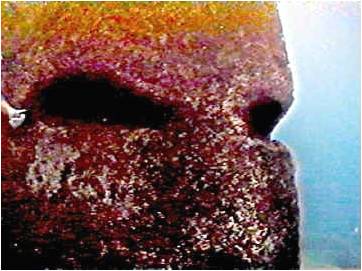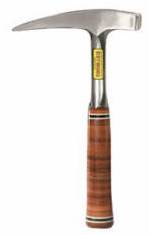Brass Bell in Coal
In 1944, as a ten year old boy, Newton Anderson dropped a lump of coal in his basement and found that it contained this bell inside. The bituminous coal that was mined near his house
in Upshur County West Virginia is supposed to be about 300 million years old! What is a brass bell with an iron clapper doing in coal ascribed to the Carboniferous Period? According to Norm Sharbaugh’s book
Ammunition (which includes several “coal anecdotes”) the bell is an antediluvian artifact.

The Institute for Creation Research had the bell submitted to the lab at the University of Oklahoma. According to the Institute, the bell was delivered for analysis by the nuclear activation method.The nuclear activation analysis revealed that the bell contains a strange mix of metals, different from any known modern alloy, with an unusual mixture including copper, zinc, tin, arsenic, iodine, and selenium. While it is brass, it is not the brass alloy that has been used by our civilization since at least the rise of the Sumerian culture some six thousand years ago.
Genesis 4:22 states that Tubal-Cain was “an instructor of every artificer in brass and iron…” Perhaps when his civilization came to an end in the flood, this bell was buried with a mass of vegetation that became coal and ended up thousands of years later in Newt Anderson’s coal bin. The bell was prominently featured in the 1992 CBS docudrama production called
Ancient Secrets of the Bible and is now part of the Genesis Park collection. Later on, Newton Anderson spent a great deal of time researching the demon atop the bell. He discovered similarities to the Babylonian Southwest Wind Demon and the Hindu deity Garuda. Garuda is sometimes depicted on top of bells, as is the Egyptian Isis. Demonic worship seems to take on similar forms in various cultures (like the Venus figurines from disparate lost cultures and the ancient fascination with pyramids), which doesn’t necessitate that they were culturally related. At our request, Mr. Anderson was examined by an expert polygraph specialist to further validate his claims.
http://manvsarchaeology.wordpress.com/2012/02/01/creation-x-files-part-1/



